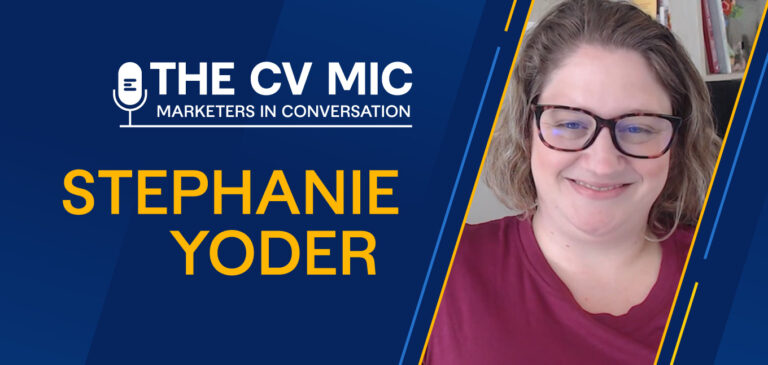There’s an argument to be made that your content strategy’s success hinges on your level of focus. How would you describe yours — broad or narrow?
We ask because as marketing strategies continue to evolve, one of the most significant emerging trends has been account-based marketing (ABM).
At first glance, ABM may seem like more work than you’re used to. But the potential rewards justify the investment. Once implemented, it can be a game changer for businesses seeking tailored engagement and increased ROI.

What Exactly is Account-Based Marketing (ABM)?
Account-based marketing is an approach where the sales and marketing teams work together to define, identify, engage, and sell to a highly targeted set of client accounts. It harnesses the talent of both departments, aiming to get high-value accounts that add significantly more to the revenue stream.
In ABM, the sales team gives input on who they want to sell to, and the marketing team creates personalized assets that speak directly to this audience. Marketing can also give input into what they’ve seen from their research or data-collection efforts to help narrow down better prospects. It’s a mutual partnership that, when executed well, uses existing resources efficiently and fruitfully.
Because both departments often have to meet sales goals to retain their budgets and get additional compensation, employees of both teams have a shared interest in collaborating and getting account-based marketing done right.
ABM vs. Traditional Models
One important point about account-based marketing is that it’s not entirely new. It still uses the same talent pools of your best salespeople and marketers, and it uses them in many of the same ways. What changes with ABM is how these talent pools overlap in their day-to-day workings.
Traditional models keep sales and marketing in silos. Collaboration may happen in passing or through meetings between department heads, but rarely are both teams in a room together working on individual accounts.
In a world where highly personalized content and authentic outreach are the only true ways to nurture the sales journey, does that model work anymore?
ABM flips the script. Instead of a sales funnel that pitches hundreds or thousands of companies in an industry and then narrows them down, ABM starts with a small, targeted, and profitable customer list. That ensures outreach is highly relevant and informed.
There is a greater investment of resources per account, but when the sales happen, they happen in a big, big way.
Why ABM Needs Content Marketing
Account-Based Marketing (ABM) and Content Marketing are not just complementary strategies; they’re interdependent components of a successful B2B marketing approach. An ABM strategy without content marketing is like a vehicle without fuel. You need to leverage content marketing in your ABM strategy to propel your efforts forward.
The ABM sales funnel
The ABM sales funnel is made up of these stages:
- Identify: Dive deep into research and analysis to pinpoint those golden accounts that perfectly match your Ideal Customer Profile (ICP).
- Expand: Deepen your understanding of these chosen accounts. Map out key stakeholders and determine their unique pain points and needs.
- Engage: Craft personalized content and campaigns that emotionally resonate with the key decision-makers within your target accounts. You’re looking to spark strong engagement across channels.
- Convert: Close the deal and turn those engaged leads into loyal customers. Address any concerns, dismantle objections, and present a solution.
The heart of account-based marketing is the need for highly personalized and targeted communication and content. It’s not just about blasting generic messages. At each stage, you need to speak directly to the target accounts you’re engaging. Content marketing supports your ABM efforts by creating emotionally engaging content that resonates with those specific accounts and their unique needs. Combining them increases your chances of building and nurturing relationships with your target accounts.

The Top Benefits of ABM
Here are some top advantages of implementing ABM in your marketing strategy.
Better informed strategies
With the combined data, knowledge, and leadership of the sales and marketing teams, strategies are generally more informed from the start. Going after the “big fish” — or major accounts — has everyone on board to waste no time and not begin prospecting until more is understood about the target demographic, its value, and how it can best be reached.
Hyper-targeted campaigns
Personalization is one of the top marketing trends heading into next year. ABM uses the data, trends analysis, and a deeper understanding of the ideal customer to only devote resources to clients with an excellent ROI and a better chance of responding to marketing. ABM is not a “throw it at the wall and see what sticks” strategy.
Relevant content for today’s customers
On that note, because the message is directed at just the right audience, it can get very specific about what needs the pitched product or service will meet. Marketing assets come with the promise of meeting the customer just where they are at — bringing a freshness, relevance, and usefulness that older B2B marketing strategies can’t quite keep up with.
Able to evolve to meet new needs
Account-based marketing is very “rinse and repeat” and (hopefully) getting more targeted and refined with each iteration. As new data returns to the marketing team, it gets incorporated into the strategy for further refinement. Sales also have its input. Their boots on the ground directly impact messaging with their understanding of pain points and what customers hope to see.
Always active and ongoing
It doesn’t end, either. Forget campaign launch dates, seasonal ad bursts, and limited-time prospect engagement. ABM is a full life cycle. Teams invest in continuous branding and sales efforts as part of their day-to-day duties.
More adaptable to deal with change
Because marketing assets are created for a specific prospect or group of very similar accounts, when their pain points change, the marketing message changes with it. Account-based marketing is adaptable because the sales and marketing teams communicate regularly and respond as needed to keep the message on point for current needs.
This is important because companies often suffer from shelves of expensive brochures and pages of web content that worked yesterday but are no longer relevant. With marketing on board for a more responsive approach, changes happen quickly, resulting in less waste.
Scalable at cost
When something works, it can be done repeatedly with minimal additional investment. Customized infographics, landing pages, and brochures were made with repeatable processes. If more accounts get added, boosting output happens faster than creating a new campaign from scratch.
Provides measurable outcomes and data
One of the more exciting pieces of account-based marketing is the data. With more and more tools available to capture, process, and learn from data, a campaign can improve over time. Add in the recent advancements in AI and machine learning, and there’s no limit to how sales and marketing can make their outreach efforts more effective with each attempt.

How does ABM content syndication work?
Content syndication is the reprinting of some or all of your content on other sites across the internet. This can be done on news sites, influencer sites, or partner networks where thought leaders and experts are frequently given the opportunity to guest post or write a column.
Syndication is another way to grow reach, boost SEO, and gain industry recognition. When a prospective client sees an article your company wrote on a third-party site that they trust, that trust transfers to you. Based on this association alone, they may be more likely to consider your brand for their future needs.
ABM is an ideal strategy to push content through syndication networks because it’s high-quality, solution-driven, and created with decision-makers in mind. Since this type of content is the most likely to earn a spot on a syndication platform, you are poised to get more from each piece of content.
By writing your content once and placing it on authority platforms across your industry, you get a better return on your time and resources. Plus, syndicated content can live on those sites for a long time, putting it among the most favored ABM tactics. The footprint is significant as you build your library over the years.

Elevate Your ABM Strategy with Content Marketing
The synergy between ABM and content marketing lies in their shared goal: to forge strong, personalized connections with key decision-makers. The right content marketing strategy can serve as the backbone of your account-based marketing. But you need to have the right team in place.
Whether you need content creation or an integrated content strategy, ClearVoice can help. Talk to one of our content strategists today to see how we can help you produce content that drives your ABM success.



